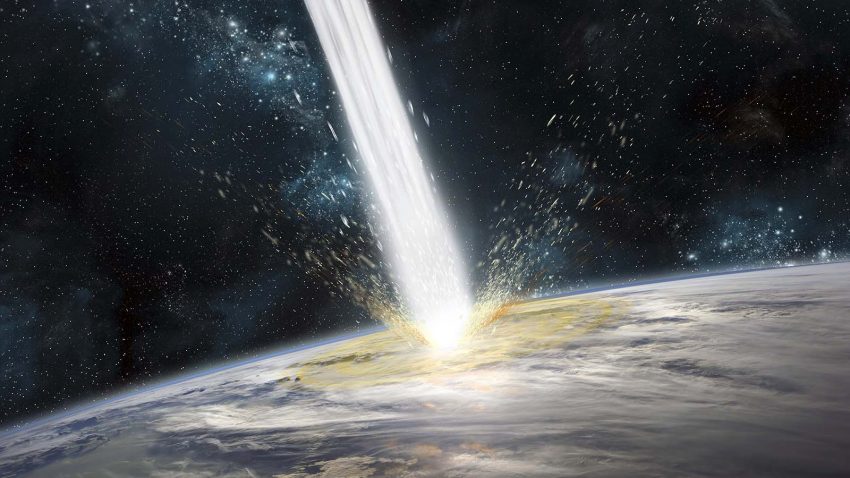It is humanity’s end: an unknown comet will collide with the earth and wipe out everything that lives and breathes on it.
This is the scenario in Netflix’s dystopian comedy Don’t Look Up, where a professor and an astronomy grad student make an astounding discovery. This science fiction satire focuses on how two low-level astronomers discovered that a comet orbiting within the solar system is going to be humanity’s worst nightmare. While Hollywood may turn this plot into a hilarious movie, most of us are curious about the likelihood of a comet colliding with our world and destroying everything in it.
While the movie treated and turned an impact event into a quite fanciful scenario, an asteroid that crashed and created a devastating impact on the earth has already happened. About 66 million years ago, an asteroid of 10-15 km wide struck the planet at Chicxulub in Mexico and led to the creation of a large crate of about 150 kilometers in diameter and 20 kilometers in depth. The impact event was a 100 million-megaton blast that sent various amounts of material into the atmosphere, devastated the Gulf of Mexico region and sparked a global winter. The impact site, now known as the Chicxulub crater, is now buried underneath the Yucatan Peninsula in Mexico.
In an instant, the collision forever changed life on earth. So, people wonder what would happen if a collision was to happen now .Would the comet strike the earth and destroy all life on it?
What Does It Take To Identify a Comet That’s Going to Crash Into the Earth?
 First off, a comet is composed of ice and dust and orbits around the sun. When it gets close to the sun, the ice and dust content start to vaporize. That’s why when you try to observe a comet through a telescope, it will appear fuzzy.
First off, a comet is composed of ice and dust and orbits around the sun. When it gets close to the sun, the ice and dust content start to vaporize. That’s why when you try to observe a comet through a telescope, it will appear fuzzy.
In general, once a new comet is discovered, there is a series of follow-on observations that scientists have to follow in order to identify the new comet. According to NASA, there are so many comets that even astronomers cannot keep count of them all. There are likely billions and billions of cosmic snowballs of frozen gases and dust that are orbiting our sun. So, suppose scientists were to identify a comet that’s going to strike the earth. In that case, they’ll have to get a series of thorough observations and these observations could go on over multiple days, multiple weeks and sometimes, multiple years.
The stumbling block, however, is the uncertainty of how short the arc is or where it’s going to move to. According to Dante Lauretta, a regents professor of planetary science and cosmochemistry at the University of Arizona’s Lunar and Planetary Laboratory, “The longer of a baseline, the tighter the constraint on its future position will be. Usually, when you discover it, it’s unknown what its orbit could be, [so] that you can’t really tell if it’s gonna hit the earth or not.”
Can a Comet Collision Destroy the Earth?
 When asked if a comet can destroy the earth completely, scientists have varying perspectives.
When asked if a comet can destroy the earth completely, scientists have varying perspectives.
In 2014, astronomers discovered a new comet and named it Comet Bernardinelli-Bernstein. According to the measurements provided by the Hubble Space Telescope, scientists have pinned down the diameter of the nucleus to be around 119 kilometers and consequently, the comet became the Solar System’s largest comet.
When asked about the impact the comet could make if it collided with earth, scientists responded with the following:
“The impact event might be thousands to perhaps even ten thousand times as energetic and more powerful that the asteroid strike that occurred 65 million years ago. However, it would not destroy the entire earth.”
But, according to other experts, if a comet as big as earth collides with our planet, it will wipe out almost everything on the planet.

